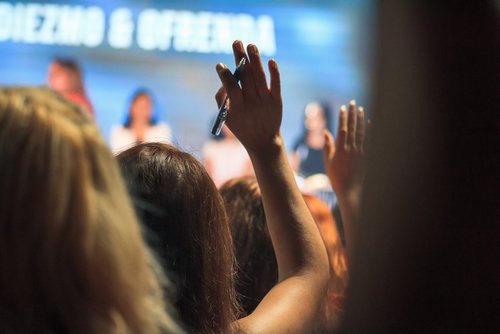Queer Theory has emerged as a significant and influential field of study within academia and beyond. This interdisciplinary approach challenges traditional notions of sexuality, gender, and identity, offering new perspectives on societal norms and power dynamics. As we delve into the origins, key concepts, major themes, applications, and critiques, we aim to unravel the complexities and nuances of this dynamic and evolving area of scholarship.
The Origin and Evolution of Queer Theory
The field traces its roots to the social and cultural movements of the late 20th century. It emerged as a response to the limitations and exclusions present in traditional theories of sexuality and gender. Let’s delve into the history and evolution to gain a deeper understanding of its foundations.
The Emergence of Queer Activism
Queer Theory finds its roots in the LGBTQ+ rights movements that gained momentum in the 1960s and 1970s. Activists and scholars began challenging the prevailing norms and advocating for the rights and visibility of marginalized sexual and gender identities. The Stonewall riots in 1969 marked a pivotal moment in this movement, sparking widespread protests and activism.
Early Influences on Queer Theory
Early influences can be traced to the works of individuals such as Michel Foucault, Judith Butler, and Gayle Rubin. Foucault’s ideas on power, discourse, and the construction of sexuality were instrumental in shaping the theoretical framework. Butler’s concept of gender performativity challenged the binary understanding of gender, paving the way for a more fluid and non-normative understanding of identity. Rubin’s groundbreaking work on the concept of sexual hierarchies and the regulation of sexuality laid the groundwork for the examination of power dynamics in Queer Theory.
Defining Queer Theory
The term “Queer Theory” itself was coined in the early 1990s, primarily by Teresa de Lauretis and Eve Kosofsky Sedgwick. It served as a way to encompass the diverse range of theoretical perspectives and approaches emerging from LGBTQ+ studies. Queer Theory sought to challenge and deconstruct the rigid categories and norms associated with sexuality and gender.
Intersectionality and Queer Theory
As the theory developed and evolved, scholars began to emphasize the intersectionality of identities and experiences. Intersectionality recognizes that individuals embody multiple social categories simultaneously, such as race, class, and ability, which intersect with their sexual and gender identities. This intersectional approach acknowledges the complexities and interconnectedness of various systems of oppression and privilege.
Global Spread and Influence
Queer Theory has transcended geographical boundaries and gained recognition and influence worldwide. Scholars from various disciplines, including literature, sociology, anthropology, and psychology, have contributed to the expansion and diversification of Queer Theory. Its impact can be seen in academic research, social and political movements, cultural production, and everyday conversations about sexuality and gender.
As we move forward in our exploration of Queer Theory, it is important to recognize its historical roots and the transformative power it has had in challenging societal norms and advocating for inclusivity and equality.
Defining Queer Theory
Queer Theory is a complex and multifaceted field of study that challenges and critiques normative understandings of sexuality, gender, and identity. In this section, we will delve into the various aspects of defining Queer Theory, including the term “queer” itself, important figures and their contributions, and key concepts that form the foundation of this theoretical framework.
Understanding the Term ‘Queer’
At its core, the term “queer” is used as an umbrella term to encompass a range of sexual orientations, gender identities, and expressions that deviate from the heterosexual and cisgender norms. Originally used as a derogatory slur, the LGBTQ+ community reclaimed the term and transformed it into a symbol of pride, resistance, and inclusivity. Queer Theory seeks to embrace and celebrate the fluidity and diversity of sexual and gender identities, challenging rigid societal categorizations.
Important Figures and Their Contributions
Queer Theory has been shaped by the contributions of numerous influential thinkers and scholars. Some key figures include:
- Michel Foucault: Foucault’s ideas on power, knowledge, and the construction of sexuality have been instrumental in shaping Queer Theory. His work challenged the notion that sexuality is a fixed and inherent aspect of an individual’s identity, highlighting how it is shaped by societal norms and power structures.
- Judith Butler: Butler’s concept of gender performativity has had a profound impact on Queer Theory. She argues that gender is not an innate characteristic but rather a social construction that is constantly performed and reproduced. This recognition of the performative nature of gender has opened up possibilities for understanding identity as fluid and non-binary.
- Eve Kosofsky Sedgwick: Sedgwick’s work on queer performativity, queer temporalities, and the epistemology of the closet has significantly influenced Queer Theory. She explored the ways in which queerness challenges and disrupts normative understandings of sexuality and identity.
Key Concepts in Queer Theory
Queer Theory encompasses several key concepts that form the foundation of its theoretical framework. These include:
- Heteronormativity: This concept refers to the assumption that heterosexuality is the norm and that all relationships and identities should conform to this standard. Queer Theory critiques and challenges this normative understanding, highlighting the ways in which it marginalizes and excludes non-heterosexual and non-cisgender individuals.
- Performativity: Building on Butler’s work, the concept of performativity emphasizes that gender and sexuality are not fixed identities but rather social constructs that are performed and enacted through language, gestures, and behaviors. Queer Theory explores how performative acts can disrupt and subvert normative expectations.
- Intersectionality: Queer Theory recognizes that identities and experiences are shaped by multiple intersecting social categories such as race, class, and ability. Intersectionality highlights the interconnectedness of different forms of oppression and privilege and calls for an inclusive and nuanced understanding of sexuality and gender.
As we delve deeper into the intricacies of Queer Theory, these definitions and concepts will provide a solid foundation for our exploration of the major themes and applications of this field of study.
Major Themes in Queer Theory
Theory explores a wide range of themes that challenge and deconstruct normative understandings of sexuality, gender, and identity. In this section, we will delve into some of the major themes that are central to This includes identity and selfhood, sexuality and gender, power and resistance, and intersectionality.
Identity and Selfhood
One of the central themes is the exploration of identity and selfhood beyond the binary constructs of heterosexuality and cisgender. Queer Theory challenges the notion that identities are fixed and stable, instead emphasizing the fluidity and complexity of individual experiences. It explores how individuals navigate and construct their identities in relation to societal norms and expectations.
Sexuality and Gender
Another significant theme is the interrogation of traditional understandings of sexuality and gender. It questions the binary categorizations of male/female and homosexual/heterosexual, recognizing the existence of diverse sexual orientations and non-binary gender identities. Queer Theory examines the ways in which power dynamics, social constructions, and cultural norms shape and influence our understanding of sexuality and gender.
Power and Resistance
Queer Theory critically examines power structures and the ways in which they impact marginalized communities. It highlights the ways in which societal norms and institutions reinforce heteronormativity and cisnormativity, leading to the marginalization and oppression of queer individuals. This seeks to challenge and disrupt these power dynamics, advocating for social change, inclusivity, and equality.
Intersectionality
Intersectionality is a crucial theme, emphasizing that identities and experiences are shaped by multiple intersecting social categories such as race, class, and ability. It recognizes the interconnectedness of various forms of oppression and privilege and advocates for an inclusive and intersectional approach to understanding sexuality and gender. Queer Theory explores how different social categories intersect and influence one another, impacting the experiences and identities of individuals.
By engaging with these major themes, Queer Theory provides a framework for critically analyzing and deconstructing societal norms and power structures. It offers a lens through which we can challenge and reimagine our understanding of sexuality, gender, and identity, paving the way for more inclusive and equitable societies.
Applications of Queer Theory
Queer Theory has far-reaching applications that extend beyond the realm of academia. In this section, we will explore how this theory is applied in various fields, including literary analysis and film studies, social and political movements, and psychology and sociology.
In Literary Analysis and Film Studies
Theory has made significant contributions to the fields of literary analysis and film studies by offering new perspectives on texts and visual media. It encourages scholars to critically examine representations of sexuality and gender in literature and film, challenging normative narratives and exploring alternative interpretations. Queer readings of texts and films highlight the presence of queer themes, characters, and subtexts, providing a richer understanding of diverse identities and experiences.
In Social and Political Movements
Queer Theory has played a crucial role in shaping social and political movements advocating for LGBTQ+ rights and inclusion. It provides theoretical frameworks and tools for understanding and challenging heteronormativity and cisnormativity. Queer activists draw on the insights to critique discriminatory policies, challenge social norms, and advocate for the rights and visibility of marginalized sexual and gender identities. Queer Theory has been instrumental in advancing LGBTQ+ movements for marriage equality, anti-discrimination laws, and increased representation in various spheres of society.
In Psychology and Sociology
Queer Theory has influenced the fields of psychology and sociology by challenging traditional understandings of sexuality and gender. It critiques pathologizing approaches to LGBTQ+ individuals and highlights the importance of affirming and inclusive practices. Queer Theory encourages psychologists and sociologists to examine the intersections of various social identities and how they influence mental health, well-being, and social experiences. It also provides frameworks for understanding the impact of societal norms and power dynamics on the development of identity and the formation of communities.
As Queer Theory continues to evolve and expand, its applications in various fields will continue to grow. By incorporating Queer Theory into these disciplines, we can foster greater inclusivity, challenge oppressive systems, and work towards creating more equitable and accepting societies for all individuals, regardless of their sexual orientation or gender identity.
Critiques and Controversies of Queer Theory
While Queer Theory has gained significant recognition and influence, it is not without its critiques and controversies. In this section, we will explore some of the main critiques and controversies surrounding Queer Theory, including those from feminist perspectives, debates on the inclusion and exclusion of certain identities, and controversies surrounding the use of the term “queer.”
Critiques from Feminist Perspectives
One notable critique of Queer Theory comes from certain branches of feminism. Some feminists argue that Queer Theory neglects the systemic oppression and gender-based violence experienced by women, focusing primarily on issues of sexuality and gender identity. They argue that Queer Theory’s emphasis on fluidity and deconstruction can undermine feminist efforts to address the specific needs and challenges faced by women.
Debates on the Inclusion and Exclusion of Certain Identities
Queer Theory has also been subject to debates regarding the inclusion and exclusion of certain identities within its framework. Some critics argue that Queer Theory can be too focused on the experiences of white, middle-class individuals, neglecting the experiences of people of color, individuals with disabilities, and other marginalized groups. They argue for a more intersectional approach that acknowledges the complexities of multiple identities and experiences.
Controversies Surrounding the Use of the Term ‘Queer’
The term “queer” itself has been a subject of controversy within Queer Theory. While it has been reclaimed and embraced by many as a positive and inclusive term, others argue that it can still be seen as derogatory and exclusionary. Some individuals and communities prefer other terms to describe their sexuality or gender identity, and they question the use of “queer” as a universal label.
It is important to engage in ongoing dialogues and discussions surrounding these critiques and controversies, as they contribute to the growth and development as a field of study. By addressing these concerns, Queer Theory can continue to evolve and strive for inclusivity, intersectionality, and social justice.


















